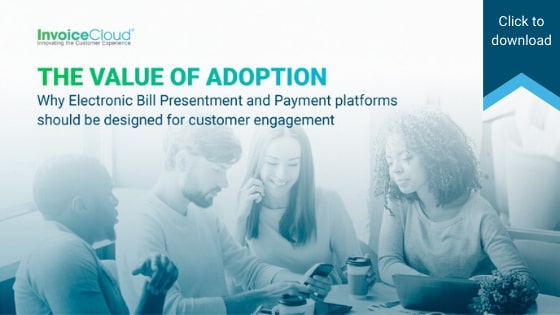Why Now is the Time to Innovate, Despite Uncertainty
 Bob Bennett
Bob Bennett

There’s no denying that, in a relatively short period of time, the world has changed significantly. These changes have impacted everything from how we do business, to how we conduct everyday activities like shopping for groceries or paying bills, to how we interact with family and friends. In times of uncertainty and crisis, we are all under increased pressure to do the right thing–for ourselves, our organizations, our customers, and our families.
During these times, many people will default to taking a ‘wait and see’ approach when it comes to innovation or making big decisions. While that might seem like the safest approach, it can actually hurt their organization in the long run.
It has been widely documented by many famous business authors, including Jim Collins, the author of Good to Great and Great by Choice, that organizations which somehow manage to innovate in down times, soar to extraordinary heights when normal conditions return. In fact, a recent article from McKinsey Consulting said this about decision making during times of crisis:
“Unprecedented crises demand unprecedented actions. Lessons from past crises suggest that leaders are more likely to underreact. What is necessary is to take the bold and rapid actions that would feel too risky in normal times.”
The best leaders see opportunity and take action to help their organizations succeed, now and in the future. You don’t have to make huge changes to have an impact, but you do have to take action.
How to innovate in a time of crisis
With so many changes occurring simultaneously, it can be difficult to know where to start when it comes to innovating, decision-making, and thinking about the future. Begin by trying to answer the following questions:
1. Which changes will have the most immediate impact?
In times of crisis, some decisions are more critical than others. Before you can think about solutions that will enable long-term innovation, it’s important to think about what your organization and customers need in the short term. What changes can you make now that will put you in a better position to think about the future?
2. What do your customers need in the long term?
The needs of your customers have changed dramatically in a short period of time. It’s likely that there are gaps between what your organization was providing and what your customers need in the current environment. For example, when it comes to online bill payment, customers are looking for contactless ways to engage with organizations and pay their bills–while remaining safe at home. This means billing organizations need easy to use, effective online and mobile payment channels.
3. What will the ‘new normal’ look like?
True innovation is what sets great companies apart and enables them to succeed in the long run. While the current crisis may be temporary, there will be lasting changes as a result of this. How will customer expectations evolve in the long term, and what does your organization need to do to be in a position to meet those needs?
Start with the customer experience
Knowing how to react and what steps to take with so much uncertainty is a challenge. To get started, focus on your customers and improving the customer experience. Right now, your customers are looking for ways to self-serve through online and contactless channels. You can help them—and your organization—by providing an easy to use online payment platform that enhances the customer experience.
Invoice Cloud is helping our clients feel confident during this time by providing them with the highest adopting digital billing and payments platform that continuously engages customers to drive up self-service and maximize on-time payments. Over the past few weeks, we’ve been working to help our clients address the needs of their payers, through initiatives like:
- Rapidly adding donation capabilities (in less than 48 hours) to client payment portals to meet the fundraising needs of their communities. One Invoice Cloud client raised over $750,000 for its local charity in the first two weeks after the page went live.
- Shifting clients from a model where their residents paid the transaction fees to a model where the town absorbed the fees to provide financial relief to residents in less than a week.
- Providing expanded payment options, such as Apple Pay and Google Pay, to make payments simpler while customers are sheltering in place.
- Quickly providing IVR (automated phone payments) to towns where customer support teams are no longer able to come into the office to answer phones.
By implementing innovative solutions to a critical need, you can deliver better experiences for your customers and better results for your organization. Even in times of uncertainty, taking steps to evaluate where your organization needs to be in the future is necessary to ensure success.
To learn more about how Invoice Cloud reduces manual collections and increases e-payments for our clients, schedule a brief conversation with one of our team members.



